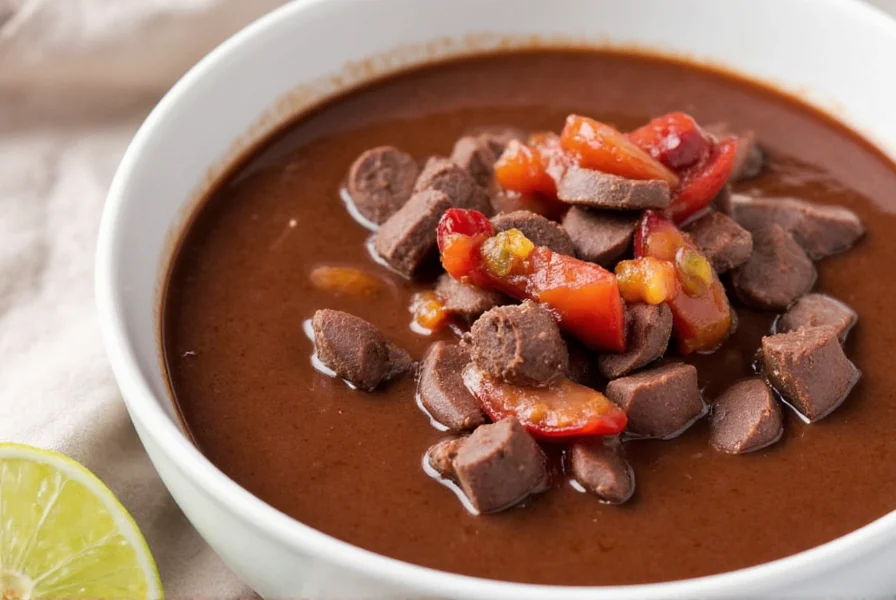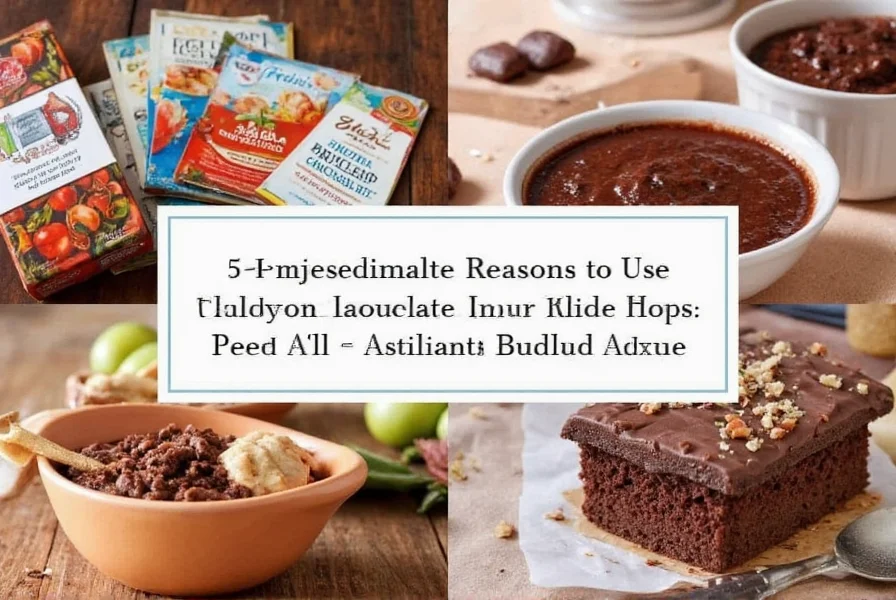5 Irresistible Reasons to Use Mexican Chocolate in Your Mole Sauce (Plus a Tastiest Buying Guide)
If you’ve ever tasted authentic mole, you know there’s something magical about the way it dances on your palate — earthy, smoky, sweet, and just slightly bitter. At the heart of that complexity? One surprising ingredient: Mexican chocolate.
In this article, we’ll explore why Mexican chocolate is more than just a dessert treat — it's a spice world star when it comes to mole sauce. Whether you’re a curious foodie or a seasoned chef looking to deepen your flavor game, you’ll find practical tips, visual comparisons, and a deliciously detailed buying guide below.
Table of Contents
- What Exactly Is Mexican Chocolate?
- Why It Works So Well in Mole
- Top 5 Mexican Chocolate Brands for Mole Lovers
- Buying Guide: How to Choose the Best Chocolate for Mole
- How to Use Mexican Chocolate in Mole Like a Pro
- FAQs About Using Chocolate in Mole
- Final Thoughts
What Exactly Is Mexican Chocolate?
Mexican chocolate isn’t your average candy bar. It’s typically made from ground cacao beans mixed with sugar and spices like cinnamon, almonds, and sometimes even chili. Unlike European-style chocolate, which focuses on smoothness and creaminess, Mexican chocolate has a rustic, gritty texture and an aromatic warmth that brings depth to savory dishes.
Traditional Ingredients in Mexican Chocolate
| Ingredient | Purpose |
|---|---|
| Cacao | Base for richness and bitterness |
| Sugar | For balance and sweetness |
| Cinnamon | Adds warm, spicy notes |
| Almonds (optional) | Contributes nutty texture and flavor |
| Chili powder (occasionally) | Kicks up the heat in some varieties |
Why It Works So Well in Mole
Mole is not just one sauce — it's a family of complex sauces originating from Mexico, often featuring dozens of ingredients. Chocolate may seem out of place in a savory dish, but here’s why it works so well:
- Balances Heat: The natural sweetness and fat content in chocolate mellow out spicy chilies.
- Enhances Depth: Cacao adds a rich umami layer that ties together toasted seeds, nuts, and dried chilies.
- Textural Contrast: Ground chocolate blends into the sauce without fully dissolving, adding body and mouthfeel.
- Historical Roots: Chocolate and mole share indigenous Mexican heritage — they were made for each other!

Top 5 Mexican Chocolate Brands for Mole Lovers
When shopping for chocolate for mole, not all brands are created equal. Here are five standouts perfect for cooking:
| Brand | Type | Flavor Profile | Best For |
|---|---|---|---|
| Lacandona | Dark unsweetened | Strong cacao, minimal additives | Classic Oaxaca-style mole negro |
| Ibarra | Semi-sweet with cinnamon | Bitter-sweet with warm spice | Beginners and quick recipes |
| Abuelita | Pre-ground with cinnamon and sugar | Sweet, spiced, easy-to-use | Weeknight moles and hot chocolate |
| Callebaut (for baking) | Belgian chocolate | Smooth, rich, neutral | Modern fusion mole recipes |
| Rivera | Organic & handmade | Earthy, intense, artisanal | Homemade mole from scratch |
Buying Guide: How to Choose the Best Chocolate for Mole
Ready to shop? Here’s what to look for when selecting your mole chocolate:
Key Features to Look For
- Cocoa Content: 70% or higher is ideal for depth and richness.
- Sugar Level: Lower sugar gives you more control over sweetness; avoid overly sweet versions unless you're using them as a shortcut.
- Spice Inclusions: Cinnamon is common; chili is optional depending on your recipe.
- Texture: A slightly grainy consistency helps mimic traditional grinding methods.
- Packaging: Look for resealable bags or solid tablets for long-term storage.
Use Cases & Target Audience
| User Type | Recommended Brand | Occasion |
|---|---|---|
| Home Cook | Abuelita | Quick, kid-friendly mole on weeknights |
| Pro Chef | Lacandona | Authentic restaurant-level mole |
| Foodie Adventurer | Rivera | Experimenting with new techniques |
| Dessert Lover | Ibarra | Combining mole with pastry or cocktails |

How to Use Mexican Chocolate in Mole Like a Pro
Using chocolate in mole might feel intimidating if you're new, but it’s easier than you think. Here are some tried-and-true steps:
- Toast Everything First: Toast chilies, seeds, and spices before adding chocolate to build layers of flavor.
- Melt It Slowly: Grate the chocolate finely and stir into the sauce base over low heat until fully melted.
- Taste Often: Add a little at a time — you can always add more, but you can’t take it back!
- Balance Sweetness: Counterbalance with a splash of vinegar or lime juice to keep it from getting cloying.
- Simmer Gently: Let the sauce simmer uncovered for at least 20 minutes to blend flavors fully.
FAQs About Using Chocolate in Mole
Can I use regular chocolate instead of Mexican chocolate?
You can, but you’ll miss out on the signature spices. If you do, try adding a pinch of cinnamon and a touch of chili powder to compensate.
Do I need to use both sweet and unsweetened chocolate?
No, it depends on your taste. Traditional mole uses unsweetened chocolate, but semi-sweet works great for balancing bold flavors.
Is chocolate necessary in mole?
Not every mole includes chocolate — but those that do, like mole poblano or mole negro, rely on it for depth and richness.
Can I substitute cocoa powder?
You can in a pinch, but it won’t provide the same creamy texture or complex flavor profile. Use high-quality Dutch-process cocoa if you go this route.
Final Thoughts
Mexican chocolate is more than just a quirky ingredient — it’s the secret weapon behind some of the most iconic mole sauces in the world. From its rich history to its modern culinary applications, it brings a depth of flavor that’s hard to replicate.
Whether you’re making a classic mole negro for a special occasion or experimenting with fusion flavors in your own kitchen, choosing the right Mexican chocolate makes all the difference. With our guide and top picks, you’re now ready to turn up the flavor and bring a touch of tradition to your table.
So grab that chocolate, get your pot ready, and let the magic of mole unfold in your kitchen!
Got a favorite mole recipe? Share it in the comments or tag us with #MoleMagic! 🍫🔥










 浙公网安备
33010002000092号
浙公网安备
33010002000092号 浙B2-20120091-4
浙B2-20120091-4